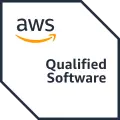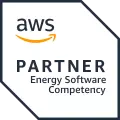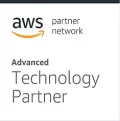Cloud-Native vs Traditional Energy Software: What’s Really Holding You Back?

Choosing the right software these days isn’t just ticking boxes on a tech checklist. It’s a strategic move that can shape your entire energy operation.
The system you choose sets the tone. Whether you’re racing ahead or stuck in the mud. From scaling with ease to adapting on the fly, your software should work with you, not against you.
Factors like the fluctuating oil price, energy transition, and ever-changing regulatory and operational demands influenced the way oil and gas companies needed to manage their data.
The outcome? Digital Transformation. This highlighted challenges with traditional on-premises solutions in keeping pace with the dynamic energy industry and forced companies to rethink their software choices.
Let’s dive in.
Structure and Access: Opaque vs. Transparent.
Traditional on-premises solutions are typically sold in modular blocks. For example, separate modules for each business function. You only get access to what you purchase, and even then, the underlying data structures are often locked away behind a technical wall.
Making even a small change? That usually means hunting down a database expert and bracing for delays.
In contrast, cloud-native platforms, especially those built around metadata-driven configuration, mean changes can be made via no-code or low-code interfaces. Users can adapt the system without backend access, developer intervention, or platform downtime. This means you get what you want, when you want it.
Customisation vs. Configuration: Complexity vs. Control.
Sure, traditional systems let you adjust everything, but it’s like customising a house with duct tape and wishful thinking. Sooner or later, that “flexibility” turns into a full-time headache.
Customisation requires specialist developers, translates to lengthy implementation times, and introduces significant maintenance overhead. Even simple changes, like adding a data field, can require major database changes and re-configuration of the user interface.
Cloud-native platforms totally transform this model. Instead of offering raw customisation, they offer extensible configuration, allowing users to adapt business rules, workflows, and interfaces through intuitive tools. This reduces reliance on vendor services and puts control back into the hands of operational teams.
The contrast of squeezing a business process into a customised traditional system is at odds with the simple configuration of a platform like EnergySys to support a business process.
Implementation Speed: Months vs. Weeks.
Traditional setups can drag on for months, like a slow-moving tanker.
Cloud-native? More like a speedboat with GPS.
Customers have found that, with a fixed delivery window and team size, projects with a much wider scope can be delivered more effectively and efficiently against traditional solutions. For example, one customer was proposed a 6-month window to configure their LNG instance, whereas EnergySys completed the project for both LNG and Domgas within the same timeframe.
With templates, streamlined configuration, and minimal reliance on external vendors, energy companies can achieve faster time to value, going live sooner and responding to business-driven change with greater speed and agility.
Time to Value: Relying on Vendors vs. Empowering Users.
Traditional licensing looks cheaper, until surprise charges sneak in. Maintenance, infrastructure, upgrades… it adds up fast.
Cloud-native platforms reduce that dependency. They offer intuitive configuration, and self-service configuration, empowering teams to adapt quickly and independently.
Licensing and Upgrades: Hidden Costs vs. Hassle-Free.
Traditional software licensing can look like the bargain option, but that “low” price tag usually only covers the licence itself, not the ongoing maintenance, hardware, infrastructure, or resilience and disaster recovery you’ll actually need. Even “fixed” subscriptions can include variable charges for data usage.
Cloud-hosted software, while marketed as a modern alternative, is often built just like an on-prem system, complete with the same painful upgrades. Instead of a giant invoice every 3–5 years, the costs are simply spread across your annual subscription, still causing disruption and downtime. Customisations often break with new releases, leaving teams babysitting ageing code with no documentation and relying on risky workarounds.
Cloud-native platforms like EnergySys work differently. Designed for the cloud from day one, they deploy regular updates automatically, as part of your subscription, with zero disruption to your existing configuration. You’re always on the latest version, with no million-dollar upgrade project looming. What you’ve got is a platform that’s up-to-date, future-proof, and kinder to your budget and your day-to-day operations.
The Bottom Line: Past vs. Future.
As the energy industry demands more agility, successful oil and gas producers are relying more heavily on their software to help bridge the gap. Many are moving beyond the ‘sunk-cost fallacy’ and realising that their on-premises solution may be holding them back.
The future is already knocking. Cloud-native platforms like EnergySys are helping teams leave the past behind. No more clunky upgrades or cryptic code. Just powerful tools that work the way you need them to.








